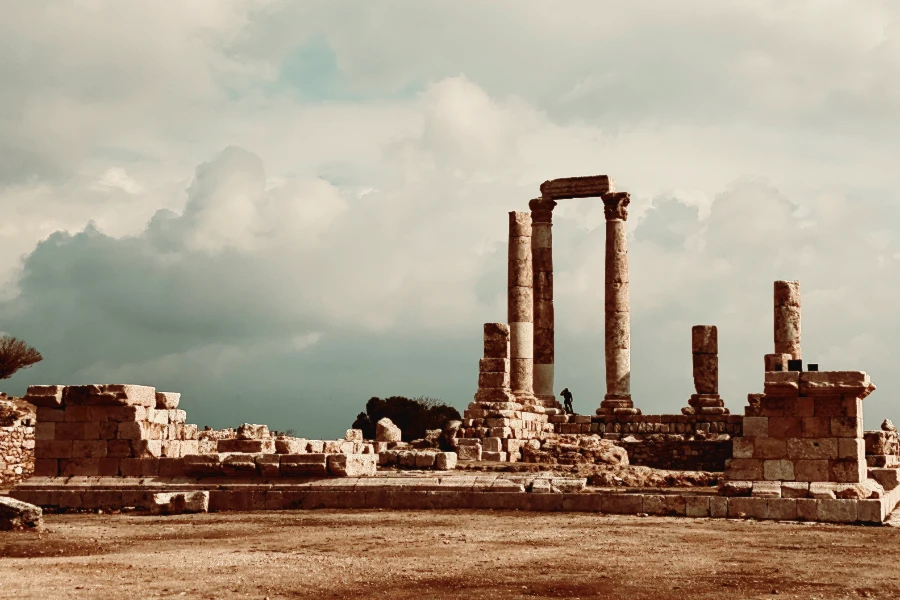Gnosticism, a fascinating religious and philosophical movement that emerged during the early centuries of the Common Era, encompasses a wide range of beliefs and practices. What sets it apart is its emphasis on esoteric or secret knowledge, with the goal of attaining spiritual salvation and unraveling the mysteries of reality. Coinciding with orthodox Christianity, Gnostic Christianity often faces misconceptions and misunderstandings. It is a mystical and enigmatic belief system, rooted in the concept of gnosis, derived from the Greek word for knowledge. Gnostics believed they possessed a higher level of insight beyond what the average person could grasp. Originating in the second century AD, Gnosticism presents itself as a diverse philosophical and religious system, characterized by significant theological and philosophical disparities.

Best expressed by a sentence by Dr Ismo Dunderberg.
Thus Gnosticism as a category creates a misleading impression of a relatively unitarian movement.
Dr Ismo Dunderberg
In contemporary scholarship, it is common to refer to different forms of early Christianity as varieties rather than simply using the term Gnosticism. However, for the purpose of this discussion, I will use the term Gnosticism to refer to the non-orthodox groups within Christianity.
Key Features of Gnosticism:
- Secret Knowledge: Gnostics believe in the existence of hidden or secret knowledge that provides insights into the divine realm and the human condition. This knowledge is often considered to be a higher form of understanding than conventional teachings.
- Dualism: Gnostic belief systems tend to be dualistic, meaning they posit a fundamental division between the material world (often seen as flawed or evil) and the spiritual realm (seen as pure and divine).
- Divine Spark: Gnosticism often teaches that within each individual, there is a divine spark or seed of higher consciousness that has been trapped in the material world. Salvation involves liberating this divine essence from the physical realm and returning it to its true home in the spiritual realm.
- Demigurge: Gnosticism sometimes posits the existence of a lower, imperfect deity known as the Demiurge, responsible for creating the material world. This entity is distinct from the true, transcendent God and is often associated with negative qualities.
- Rejection of the Material World: Due to the belief in the inherent imperfection of the material world, some Gnostic groups advocate asceticism or detachment from material pursuits as a means of achieving spiritual growth.
- Mythical Narratives: Gnostic teachings often rely on symbolic and mythological narratives to convey their spiritual insights. These narratives may involve the adventures of divine figures, the soul’s journey through various realms, and the nature of the cosmos.
Jesus the Gnostic

Although Gnostic Christianity and early versions of Christianity share some similarities, they also have significant differences. One similarity is the belief that salvation is achieved through knowledge rather than solely through faith in Jesus Christ, which aligns with the Gnostic perspective. However, there are distinct contrasts between Gnosticism and early Orthodox Christianity. Early Christians firmly believed that Jesus was the exclusive path to the divine realm, which differs fundamentally from the Gnostic belief that salvation can be attained elsewhere. Additionally, the Gnostic faith emphasized the importance of attaining salvation through the discovery of hidden truths and the purification of oneself from sin..
The Quest for Salvation

The Gnostics held a unique belief that salvation was not attained through placing faith in Jesus Christ, but rather through the discovery of hidden knowledge that Jesus himself had imparted. They believed that true salvation could only be obtained by disconnecting from the material world and attaining access to the divine realm. This profound understanding, known as gnosis, allowed them to gain insight into spiritual truths that went beyond what was commonly revealed in scripture. The Gnostics taught that there were multiple paths to salvation, and that each individual possessed their own distinct comprehension of the gospel. In fact, some even went so far as to deny the existence of Jesus altogether, asserting that salvation could be achieved through alternative means.
Some key beliefs of the Gnostics include:
- The concept of a supreme being, known as the one true God, transcends the boundaries of creation itself.
- The Gnostics, a group of individuals with unique beliefs, placed great importance on receiving direct revelations from God, rather than relying on the interpretation of scripture by church authorities. In their pursuit of spiritual understanding, they emphasized the value of knowledge over blind faith.
The resurrection of Jesus is a problem

The resurrection of Jesus poses a challenge for gnostic authors because their core beliefs revolve around transcending the material world and the human body. Many gnostic groups find it difficult to accept that Jesus was crucified and subsequently resurrected. Their ultimate goal is to liberate the divine spirit and break free from the constraints of the material world. For them, this current existence is akin to an illusion, while the true essence of life remains hidden in the realms of the unknown.
Various gnostic Christianities

The diverse gnostic sects held differing perspectives on the world, often conflicting with one another. Occasionally, their theological knowledge would converge or overlap. These sects influenced each other for several centuries until certain Christianities were eradicated by the orthodox authorities, resulting in the burning of their scripts. Others disintegrated over time, either stored away in libraries or buried in tombs. In this blog post, I will delve into the theology of four prominent Gnostic belief systems, aiming to provide an understanding of their core principles.
sethianism

The Sethians were a prominent group of ancient Gnostic Christianities that emerged in the Mediterranean region during the early days of Christianity.
According to Sethian beliefs, they traced their origins back to Seth, the third child of Adam and Eve. They believed that Seth was the pure offspring of Adam and Eve, as they claimed that Eve had been violated by Yaldabaoth against her will, resulting in the birth of Cain and Abel.
The Sethian Christians drew inspiration from both Judaism and Platonism, blending elements of Jewish and Greek philosophy to offer a unique interpretation of cosmic creation. They chose to identify themselves with Seth, honoring him as the third son of Adam and Eve. One notable work associated with the Sethians is the Second Treatise of the Great Seth, a literary masterpiece.
Sethianism exerted a considerable influence on other Christian groups in the Mediterranean, including the Thomasines, the Basilideans, and the Valentinians.
Notably, Sethianism diverged significantly from other Christian sects and Jewish variants. Its distinctive perspectives had a profound impact on subsequent Christian communities. A prime example of this can be found in the Gospel of Judas, a text that presents Judas as the true and favoured disciple of Jesus, reflecting the unique viewpoints of the Sethians.
Other Sethian Gospels are:
- The Apocryphon of John
- The Thought of Norea
- The Trimorphic Protennoia
- The Coptic Gospel of the Egyptians
The gnostic myth is a fascinating and intricate concept that challenged the fundamental beliefs of mainstream Christianity. It presents a vast and captivating world of the divine, brimming with powerful beings known as Aeons. These divine entities have intricate relationships with one another, shaping the very foundation of our understanding of spirituality.
The Entirety

In the realm beyond time and space, known as the Entirety or Fullness, the Gnostics believed in the existence of a complex pleroma and its divine aeons. This concept of a harmonious and supreme state was inherited from ancient beliefs and philosophy. The Gnostics considered the Entirety to be a stable and supreme entity.
The Great Invisible Spirit

Behold, the true and ultimate deity, encompassing all aspects of existence. This divine entity is pure, deserving of our utmost reverence. It is the one and only true god, existing before the concept of time itself. Its nature is incomprehensible, surpassing any other power. In the realm of Gnostic mythology, this supreme being is referred to by various names, such as The One, Monad, the father of the Entirety, or the invisible Spirit. Despite its unknowable essence, it serves as the wellspring of all creation and the very fabric of reality. For a more in-depth exploration, one can delve into the Secret Book of John. The Invisible Spirit, an unfathomable intellect, contemplates its own existence, thus giving rise to the intricate world we inhabit.
The Pleroma

The Sethian paradise or universe is believed to be a divine space encompassing all aspects of the almighty god – wise, powerful, and true. Interestingly, the Gnostics suggest that even the Pleroma, the divine realm, is susceptible to desire and passion. However, the material realm serves to negate these emotions, allowing innocent human “sparks” to ascend back to the Pleroma. This intriguing concept is explored in the Apocryphon of John, a script found in the Nag Hammadi library.
Aeons in Gnosticism

Aeons, derived from the Greek word “aion” meaning “eternal,” are divine lights or thoughts that bear names associated with human attributes. These Aeons are a part of the great invisible spirit and share similarities with angels in the Judaeo-Christian tradition. They serve as servants and emanations of God, while certain Gnostic angels, like Armozel, also fall under the category of Aeons. Interestingly, each Aeon is paired with another Aeon, creating a female-male partnership. This pairing is compared by the Sethians to the complementary nature of humanity, expressing two aspects of the same reality. The gender of each Aeon is determined by the grammatical gender in the Greek language.
The Aeons that make up the entirety result from the Invisible Spirit’s knowledge or thought of itself. They are its thinking or its intellect, in all its complexity. They form also a spiritual realm, the equivalent of Plato’s realm of ideal forms. (…) … for the Gnostics, the entirety that he aeons constitute is truly real and eternal; the material world is a flawed imitation of the entirety and destined to perish.
David Brakke
The lower Aeons
The initial four lower Aeons were brought into existence by Forethought, who sought permission from the invisible spirit. These divine lights, originating from his request, hold great significance.
- Incorruptibility
- Truth
- Prior acquaintance
- Eternal life
In the course of time, a series of smaller Aeons emerged, each with its own unique characteristics. Among these were the Aeons of language, perception, intellect, and harmony. The final Aeon, known as Wisdom or Sophia, marked the culmination of this progression.
Barbelo / Forethought

The Barbelo, also known as Forethought, is the initial Aeon that emerges from the vast unseen spiritor. It is sometimes referred to as the second principle. We gain insight into the origin of Forethought from the secret book of John. Barbelo is also recognized as the chamber or womb of totality, as it serves as the dwelling place for the entirety. This sacred space is where the multiplication of divine thoughts takes place, giving rise to the creation of Aeons.
Forethought is the first power that preceded everything. It came from the mind of the invisible spirit. The Barbelo is considered female. She is the great power and a mirror of the invisible virgin spirit. She is the first thought! A universal womb, that came before everything else.
The Secret Book Of John
Self-Originate or Christ

The self-originate, known as Autogenes in Greek, plays a crucial role as a connection between the Barbelo and the other Aeons. The Christ, who encompasses the entire essence, is revered as the ultimate ruler among the other Aeons.
How was the Self-Originate created?
When the Invisible Spirit gazes upon the Barbelo, a luminous spark is ignited within, giving birth to a new Aeon known as the divine originate. This sacred event holds immense significance as it signifies the creation of a powerful and ethereal realm.
Within the self-Originate, there exist four radiant luminaries.
- Harmozel
- Oroiael
- Daueithai
- Eleleth
Eleleth is a fascinating entity that encompasses archetypal humans such as Adam, Eve, their son Seth, and their daughter Norea. These four luminaries serve as the origin for all the other Aeons. The concept of Eleleth and its intricate system can be rather challenging to fully comprehend, as various Gnostic texts provide distinct accounts of the divine realm. Nonetheless, delving into the study of Eleleth offers a captivating exploration of the complexities within Gnosticism.
Three-member divine family
The Gnostic idea of God revolves around a divine trinity consisting of God the father, Barbelo the mother, and Christ the son. This sacred trio holds a central place in the Gnostic belief system, representing the fundamental essence of their understanding of the divine.
Sophia

Sophia, revered as the goddess of wisdom and an Aeon, holds a significant role in the myth as she stands apart from the great invisible spirit. However, the harmony of the divine realm was disrupted when Sophia, desiring to act independently, chose to disregard the will of the invisible spirit and her male counterpart. Typically, Aeons work together in pairs, but Sophia, being a female Aeon, sought to exercise her own agency. As an Aeon of the invisible spirit, Sophia possessed divine powers, and her desire to contemplate a thought held immense potential. Yet, because she acted autonomously, without the involvement of her consort, the divine being she created turned out to be flawed, misshapen, and even considered repulsive. This unexpected creation, a sort of aberration, caused Sophia great shame and regret. She attempted to exile her monstrous creation from the realm, naming it Yaldabaoth, in an effort to conceal her mistake from others.
Yaldabaoth

The Sethian Gnostics held a belief in a dualistic cosmology, where the material world was brought into existence by a lesser god known as the Demiurge or Yaldabaoth. Depicted with a unique combination of a snake body and a lion head, Yaldabaoth was in constant opposition to a higher god. The name Yaldabaoth originates from Aramaic and translates to “the gatherer of armies.”
According to the Sethian belief, Yaldabaoth, also known as the lion-faced god, was the offspring of Sophia, or Wisdom. His desire for worship led him to create Adam and Eve, but he was characterized as a jealous and malevolent deity. In an act of violence, he raped Eve, resulting in the birth of Cain and Abel, who later experienced their own conflicts, culminating in the fictional murder of Abel. The Gnostics recognized the jealous nature of the god depicted in the Old Testament, as conveyed in Exodus 20:5. This theme of envy is woven throughout the creation story, with Cain mirroring the same struggles as YHWH, or the lion-faced god, in Sethian Gnostic mythology.
The Demiurges, being imperfect and driven by egoism, aimed to create a flawless world but ultimately fell short. Instead, they unintentionally brought forth an imperfect creation. To the Gnostics, the material world was seen as a prison from which humans needed to escape in order to attain eternal salvation.
Adam

Adam, in the Bible, was the very first human being ever created by God. His story is a fundamental one, and it has shaped many aspects of the Judeo-Christian and Islamic traditions. According to the Bible, there are a couple of different accounts of Adam’s creation. The name “Adam” itself is significant. In Hebrew, it means “man,” but its root, “adama,” means “earth.” This reflects the fact that Adam was created from the soil, highlighting the close connection between humanity and the earth. Adam’s story holds deep theological significance in Christianity. The apostle Paul saw Adam as a precursor to Christ. Just as Adam’s sin brought death, Christ’s righteousness brought life. Adam’s story also lays the foundation for the concept of original sin, which states that all of humanity is affected by Adam’s disobedience. This concept has shaped Christian theology for centuries but was also essential in Sethian Christianity.
Eve
Eve, a central figure in the Bible, is a captivating character whose story is both intriguing and thought-provoking. As the first woman according to the creation story in the Hebrew Bible, she holds a unique place in the narrative. Her tale has sparked diverse interpretations and debates, but recent feminist biblical scholarship has shed new light on her significance.
Eve’s journey begins in the Garden of Eden, where she was created by God as a companion to Adam, the first man. In an innovative twist, she was formed from Adam’s rib, reflecting the idea of partnership and shared responsibility. Her name, which means “life,” signifies her role in the procreation of humanity.
The Sethians thought that she was raped by the evil Yaldabaoth which resulted in Cain and Abel.
Cain and Abel
Cain and Abel, the biblical brothers, offer profound insights into human nature, choices, and consequences. As the first sons of Adam and Eve, they followed diverse paths—Abel became a shepherd, while Cain pursued farming. Their story takes a critical turn when both make offerings to God. Abel’s offering, the “firstborn of his flock,” pleases God, but Cain’s offering is not favored, stirring jealousy.
God advises Cain on his emotions, warning that sin lurks at his door, urging him to rule over it. Sadly, Cain’s jealousy festers, leading to the unthinkable murder of Abel. When questioned, Cain denies responsibility, facing God’s punishment of becoming a wanderer, unable to farm.
Cain’s story underscores human choices and their consequences. His refusal to confront his emotions highlights the dangers of unchecked jealousy. Cain’s exile, marked by God’s mercy, serves as a reminder of divine compassion even in the face of severe punishment.
According to the Sethians, both figures were considered as anomalies brought into existence by Yaldabaoth, making them inferior and aligned with malevolence.
Seth
Seth was the third son of Adam and Eve, born after the tragic event where his elder brother Cain murdered Abel. His birth marked a turning point for Eve, who believed that God had granted her another child in place of Abel. The name “Seth” itself means “set in place of,” signifying his role as a replacement for the lost Abel. In a way, Seth’s birth symbolises God’s response to the cycle of good and evil, a pattern that surfaces throughout human history.
Interestingly, the Bible provides us with limited details about Seth’s life and character. Unlike the extensive stories of his parents and brothers, Seth’s narrative is more condensed. He emerges as a pivotal figure in the lineage that leads to Abraham and ultimately to Jesus Christ.
According to the Sethians, the true and pure son born from the union of Adam and Eve is considered to be the authentic first human.
Norea
Norea emerges prominently in two texts: “Hypostasis of the Archons” and “Thought of Norea.” In the former, Norea is portrayed as the daughter of Adam and Eve, and sister to Seth. She plays a unique role by setting fire to Noah’s Ark and receiving a divine revelation from the Luminary Eleleth. This act of setting the ark ablaze is a powerful symbol of her defiance against the archons, even as she seeks protection from divine forces. Her significance extends further in “Thought of Norea,” where she yearns for deliverance from the archons, and her plea reflects her role as a powerful and transformative figure within Gnostic thought.
In the context of Gnostic literature, Norea’s character embodies complexities and contrasts. She’s identified as a feminine counterpart to Seth, and she’s also seen as a savior figure while simultaneously representing the prototype of the saved gnostic. Her associations with Seth and Sophia, as well as her connection to divine revelation and heavenly beings, create a multidimensional portrayal that speaks to her unique role in Gnostic cosmology.
Beyond Gnostic literature, Norea’s character is also linked to other narratives. In some Mandean texts, she’s considered the wife of either Noah or Shem, adding to the diverse interpretations of her role. Epiphanius of Salamis suggests a connection between Norea and Pyrrha, the wife of Deucalion in Greek mythology, drawing on linguistic links and associations with fire. There are parallels drawn between Norea and Aseneth, a figure from the Joseph and Aseneth story, both representing virginal and divine feminine attributes.
The depiction of Norea as a figure who challenges the established order, receives divine revelations, and embodies both savior and transformative qualities makes her an intriguing and enigmatic character in Gnostic literature. Her portrayal within different texts and her various associations showcase the complexity of her role and the rich layers of meaning she brings to the narratives she inhabits.
In the ancient mythological Sethian narrative, the malevolent Yaldabaoth is depicted as attempting to assault Norea, much like his previous act of violating Eve.
Valentinians

In Valentinian Christian theology, a rich tapestry of diverse realities unfolds, encompassing a multitude of forms and dimensions.
- Physical reality
- Cosmic Reality
- Spiritual Reality
Valentinus, the esteemed founder of the Valentinian movement, was born in the Nile delta around 100 AD, specifically in Phrebonis. His education took place in Alexandria between 110 and 130 AD, a city with a rich history established by Alexander the Great. During his time in Alexandria, Valentinus likely crossed paths with Basilides, an influential figure who had his own interpretation of Christianity.
After leaving Alexandria, Valentinus spent some time in Rome where he gained recognition and achieved success as a teacher. According to Tertullian, there were strong possibilities of him being elected as Bishop of Rome, although he ultimately did not attain this position. Nevertheless, Valentinus had a profound impact on Christianity, making his teachings highly influential and leading to the popularity of Gnosticism for the following three centuries.
Valentinus was a brilliant thinker who played a significant role in shaping Christian doctrine. He skill-fully incorporated the philosophies of Plato and Aristotle, elevating Christian thought to new heights. His theology emphasised the divine nature of the soul and its journey towards union with God. This concept was reminiscent of classical Sophia myths and formed the foundation for the complex anthropological myth that emerged from his school, particularly through his star pupil Ptolemy.
While Valentinus’ teachings were highly regarded by many, he was labeled as a heretic by church fathers like Irenaeus. In this context, being labeled a heretic carried a different meaning than it does today. Valentinus posed a threat because his teachings bore similarities to orthodox beliefs, but also contained subtle differences that were of great importance to these church fathers. Evidence of Valentinian texts, such as the Gospel of Truth, have also been discovered at Nag Hammadi.
In future discussions, we will delve deeper into the fascinating world of Valentinians and explore their beliefs and contributions to the development of Christianity.
Basilideans

Basilides, a prominent Gnostic leader in Alexandria, Egypt, was deeply influenced by the teachings of Plato. He skillfully blended the classical wisdom of this renowned Greek philosopher with Jewish and early Christian tenets. Basilides’ teachings centered around a dualistic theology that explored the origins of the world and humanity’s role within it.
According to Basilides, the material world was created by the demiurge, the God of the Old Testament. However, the soul and mind were not products of the demiurge’s creation. Instead, they were brought into existence by Sophia, a divine spirit emanating from the Godhead. To sustain the material world, a spiritual force known as pneuma was utilized by the demiurge to create objects and beings.
Basilides also propagated a form of gnostic monotheism that diverged from orthodox Christianity. While he acknowledged Jesus as a great teacher who liberated humanity from the demiurge’s tyranny, he did not view Jesus as a fully human incarnation. For Basilides, Jesus’ purpose was to guide humanity back to its true spiritual home within the divine realm.
Followers of Basilides’ teachings, known as Basilideans, believed in Sophia as the true creator of the cosmos. They maintained that she was expelled from the divine realm by the demiurge. Additionally, they interpreted Adam and Eve as spiritual archetypes for humanity, perceiving their act of disobedience as a potential catalyst for human enlightenment. Basilideans also embraced a pantheon of gods and goddesses, often depicted as anthropomorphic animals or abstract concepts.
Thomasine’s

In recent years, there has been an ongoing debate among scholars regarding the classification of the Thomasines. Some argue that they can be considered as Gnostic, while others believe they should be labeled as Christians. The reason behind this debate stems from the fact that the Thomasines lack certain typical Gnostic elements such as the myth of Yaldabaoth and the story of Seth. However, they do share the belief that acquiring knowledge is crucial for attaining entry into the kingdom of God. The Thomasines also placed a strong emphasis on wisdom, particularly focusing on the sayings of Jesus Christ, as evidenced in the Gospel of Thomas. Unlike orthodox believers, who anticipated a day of judgment or apocalypse, the Thomasines held the belief that the kingdom of God resides within oneself and can be attained individually.
Gnostic versus Orthodox Christianity

Gnosticism, a set of teachings emphasizing knowledge and enlightenment, offers a unique perspective on spirituality. Unlike traditional Christian faith, which focuses on salvation from sin, Gnostics delve into higher levels of knowledge to uncover hidden meanings within sacred texts. Their goal is to find the key to the Pleroma and merge with the divine entity. This alternative belief system gained some acceptance among early Christian thinkers but was later denounced as heresy by figures like Epiphanius of Cyprus, who labeled the Gnostics as heretics in his book, the Panarion. One of the notable differences between Gnosticism and mainstream Christianity is the perception of God. Gnostics view the God of the Old Testament as an imperfect being who created matter out of imperfection, whereas orthodox Christianity sees God as loving and forgiving. Another intriguing contrast lies in the perception of Judas Iscariot, whom Gnostics regarded as a positive figure. Despite their distinct beliefs, Gnostic groups maintained a significant following for several centuries until their eventual extinction. The rise of orthodox Christianity, enforced by Emperor Constantine the Great, contributed to the decline of Gnosticism within the Roman Empire. It is still debated why Constantine made this choice, with some speculating it was influenced by his mother’s faith or the practicality of tax collection through the organized structure of the Church. As Gnostics were considered heretics, many sought refuge in regions like Persia and Saudi Arabia, where their ideas influenced the development of Islam. In a brief attempt to reverse the dominance of Christianity, Julian Augustus, Constantine’s half-brother’s son, took over the Roman Empire in 360 AD. However, his reign lasted only three years and failed to achieve this goal. The origins of Gnosticism remain a subject of scholarly debate, as evidence from the first century is scarce. We rely on quotations from historians, who often mentioned Gnosticism only years later and in passing.
Gnosticism in Orthodoxy
The esteemed orthodox bishop Clement of Alexandria held a distinct perspective on Gnosis, as he acknowledged its importance but adhered to an orthodox interpretation. Clement expressed his disapproval of other Christianities that propagated what he considered to be “false” knowledge of god. Origin of Alexandria, a renowned theologian within orthodoxy, further developed this particular approach to teaching. Although Origin faced accusations of heresy at a later stage, it is noteworthy that this judgement was ultimately reconsidered in subsequent periods.
Gnosticism the Summary
Gnosticism, a diverse movement, took on various forms across different regions and time periods, drawing heavily from the platonic worldview. One of the most well-known branches was Early Christian Gnosticism, which blended Christian teachings with Gnostic ideas. However, it faced opposition from the mainstream Christian Church and many of its texts were suppressed or lost. While Gnostic ideas and influences can still be found in some modern spiritual and religious movements, it is important to recognize that the understanding of Gnosticism has evolved over time. It is crucial to approach this complex religious and philosophical system with nuance and respect for its historical context and diversity.
Gnosticism developed over centuries and eventually faded away. The Gnostics, in their quest to make sense of the hostile and challenging world they lived in, combined Greek Platonism with Christian and Jewish perspectives to create their own mythology. Some scholars even suggest that Gnosticism may have originated in Judaism, as the philosopher Philo of Alexandria, a contemporary of Paul, already identified problematic aspects of the Old Testament and incorporated Greek philosophy into his theology. The discoveries of the last century have revealed the diversity of the Christian faith in the first four centuries. However, due to the lack of archaeological evidence from the first two centuries, determining the original teachings of Jesus, whether he was a real historical figure or an imaginal one like other dying and rising gods of that time, remains nearly impossible. Despite these challenges, the journey of seeking truth in Gnosticism is undeniably fascinating.
FAQ section
Many Gnostic teachers have influenced the development of this religion but the most famous are Valentinus and Basilides.
The Gnostics were a very small denomination of Christianity, and their texts are not included in the Bible. The vast majority of Christians – the only Christian cult, which didn’t go extinct – believe that Jesus was resurrected from death and ascended to heaven as the second person of the Trinity. Gnostic in contrast believed that you need to find the secret meaning in the sacred text to let the divine spark set free.
The effects of Gnostic Christianity on the individual can be positive or negative. The positive effects can include a greater understanding of the spiritual world and an increased sense of empowerment. The negative effects can include a decreased sense of spirituality and a belief that one has access to greater knowledge than others.
The afterlife is an important part of Gnostic Christianity. Most Gnostics believe that the soul will survive death and enter into a spiritual realm. Some Gnostics also believe that the soul can exist apart from the body and that humans can become gods or goddesses.
There are modern Gnostic churches they revitalised in France, but it is important to remember that Gnosticism is a religion with a long history. There have been many different Gnostic sects throughout history, and they have often disagreed with one another on theological issues.
Gnostics believe in a very different version of Christianity than the mainstream denominations. They also believe in several controversial doctrines, such as the existence of a spiritual realm and the ability to become enlightened beings. This made Gnostic Christians vulnerable to attacks from other Christian sects.
Where the two main Christian branches differ is: that orthodox Christians believe in the resurrection of Jesus and the forgiveness of sin as he died for the sins of humanity. Gnostic saw Jesus as a powerful light or aeon who took human shape and showed Gnostic Christians a way to find the path back to the ultimate god and to be one with the entirety.
It seems unlikely that Jesus was a Gnostic although Jewish sects at the time of Jesus had very similar features to later Christian Gnostic cults. There is actually a debate among scholars if Christian Gnosticism originated from these Jewish beliefs. It would all come down if Jesus ever existed at all.





